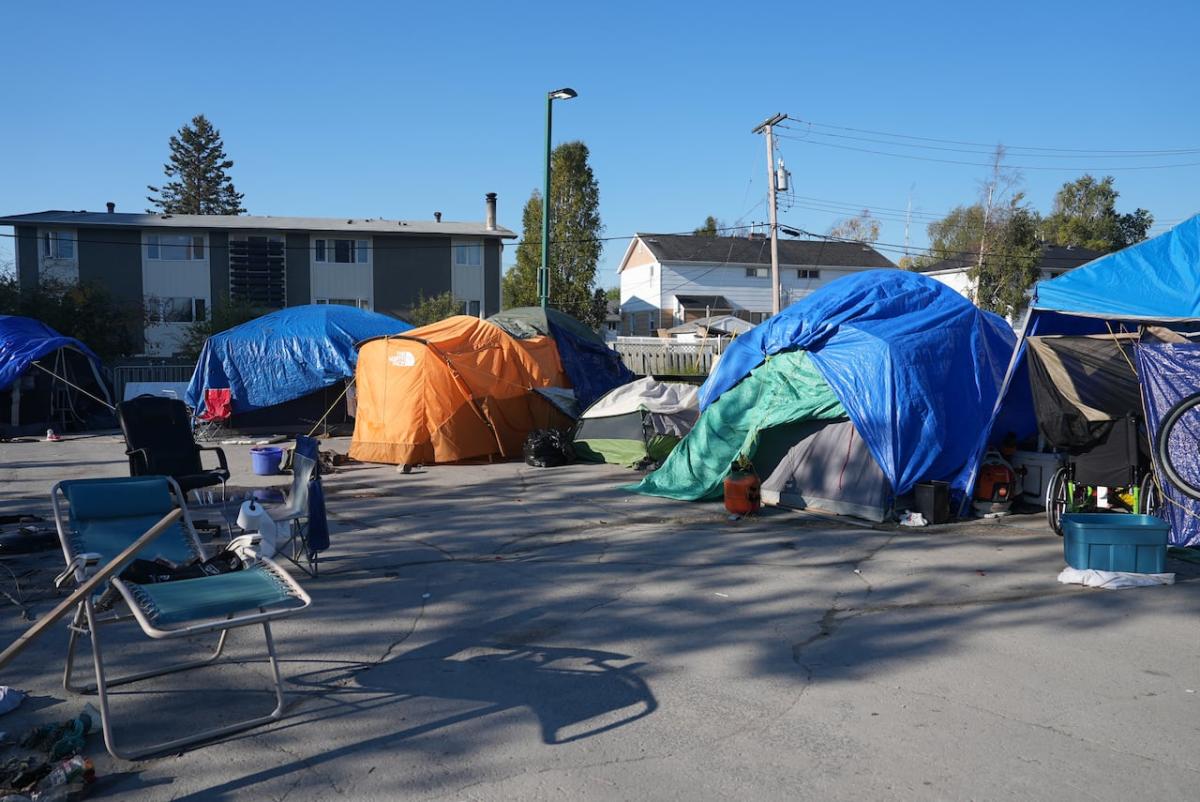


A homeless encampment set up on 51 Street in Yellowknife will be taken down next week, and the N.W.T. government says another formal encampment won’t be established.
Instead, it plans to work with individuals who have been staying at the camp to find other options for them, either through shelters, with family members or — for those who came to Yellowknife from elsewhere in the N.W.T. — by helping them get back to their home communities if they want it.
It’s part of a “whole-of-government approach” to address homelessness, said Premier R.J. Simpson during a public briefing before the legislature’s social development committee Friday afternoon.
“We are not going to pat ourselves on the back and walk away,” Simpson said. “In this government, we are taking it very seriously.”
Last month, the government helped the encampment of between 12 and 15 residents find its current location on 51 Street, in a parking lot next to a public housing complex, after several other locations didn’t work out.
Earlier this week, camp residents, as well as supporting Yellowknifers, sent an open letter to the N.W.T. government asking for clarity on the camp’s future, including a list of suitable places to relocate it, transportation to the new location, an update on whether there will be shelter spaces for them once winter hits, and a priority list for who would be going into shelter spaces first.
The territorial government intends to respond to the letter formally by end of day Friday but didn’t have a full response as of the public briefing.
The camp’s dismantling is set to begin Monday. On Wednesday, the temporary services established for the camp will end entirely; then, government staff will clean the location up so an unrelated N.W.T. Housing project can go ahead nearby.

Colton Migwi is a resident of the encampment on 51 Street. He says residents are sad to leave, and he hopes the government will help. (Julie Plourde/Radio-Canada)
For camp residents, the news came as a blow.
“Honestly, it’s going to be tough for us to move, because we put a lot of work into this spot,” said Colton Migwi. “We put a lot into it, and it’s sad that we have to pack up and leave, unfortunately.”
Migwi said the camp’s residents are thankful for people who have supported them. Since moving to the lot on 51 Street, they’ve worked with the territory to get bathrooms, garbage collection and some electricity.
Migwi said some camp residents may need help moving due to disabilities. He’s hopeful neighbours may offer that aid.
He added some of the camp’s residents don’t have anywhere else to go, and he hopes they are put into public housing.
“Some of us don’t have family here, or if we do, their homes are full. That’s what we’ve got to live through,” he said.
“I’m hoping we don’t have to face the winter.”
Overcoming barriers
John MacDonald, deputy minister of Executive and Indigenous Affairs, said Friday that the government has spent the past few weeks learning about the individual needs of the camp’s residents and what barriers exist to finding them somewhere else to stay.
Shelters in Yellowknife have been full to overflowing in recent months. MacDonald said there are about 68 people in emergency shelters right now, 108 in transitional housing and between 30 and 60 who are unsheltered.
MacDonald said those in the camp who can’t stay with family may be able to stay at shelters, if the government can help bring more shelter capacity online temporarily before winter. Staff are also looking to help residents who face barriers to staying at shelters — if, for instance, they have nowhere to store their personal effects.
“[That’s a] significant impediment to some individuals,” he said.
The longer-term solution is to make more supportive housing available, he added.
Though most of the camp residents are from Yellowknife, some have come from smaller N.W.T. communities. Simpson said there is funding available to help them get back home, if they want to.